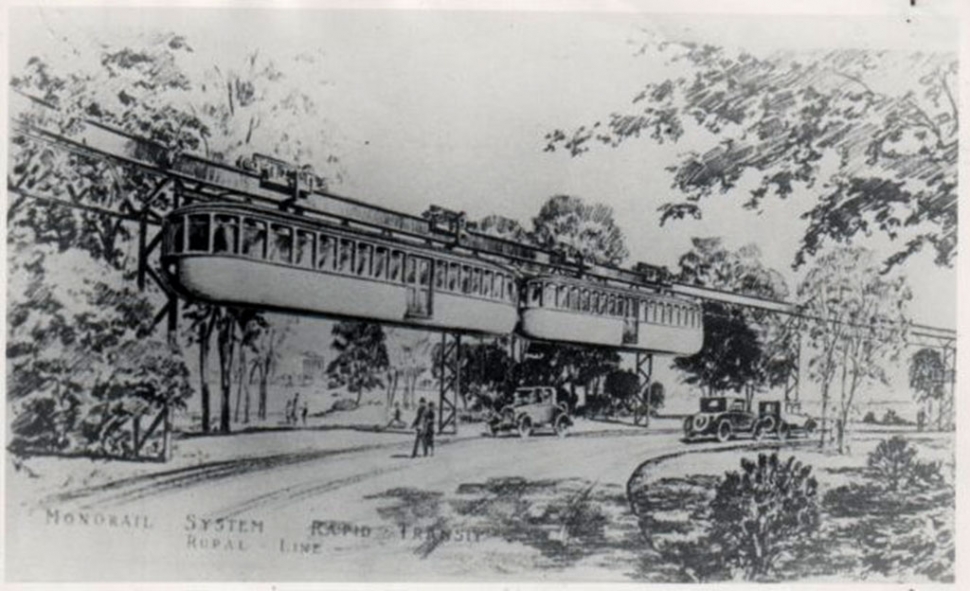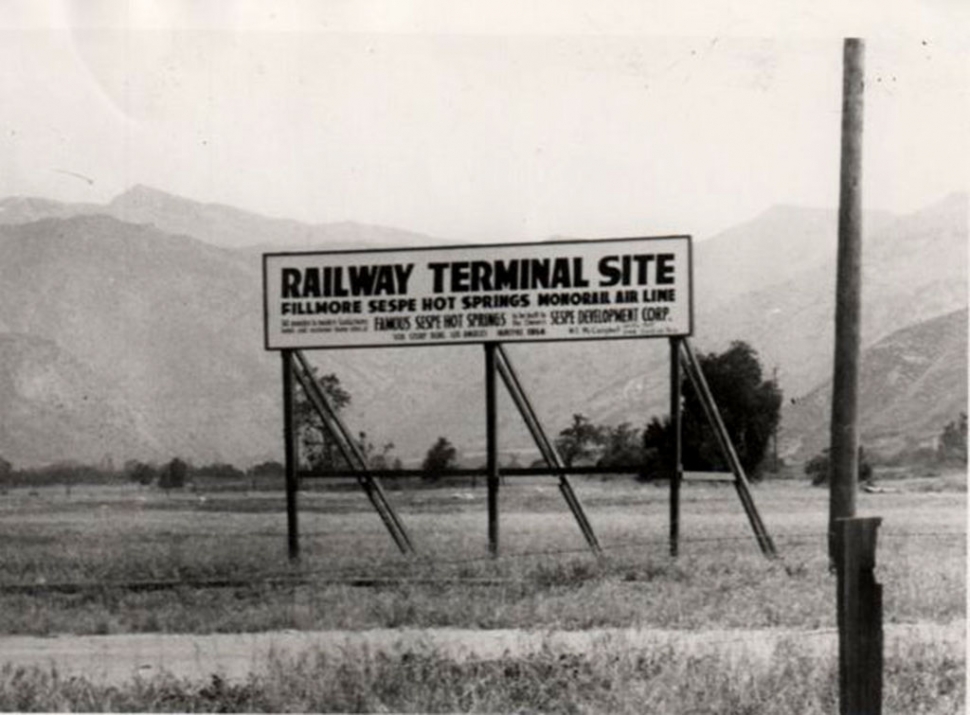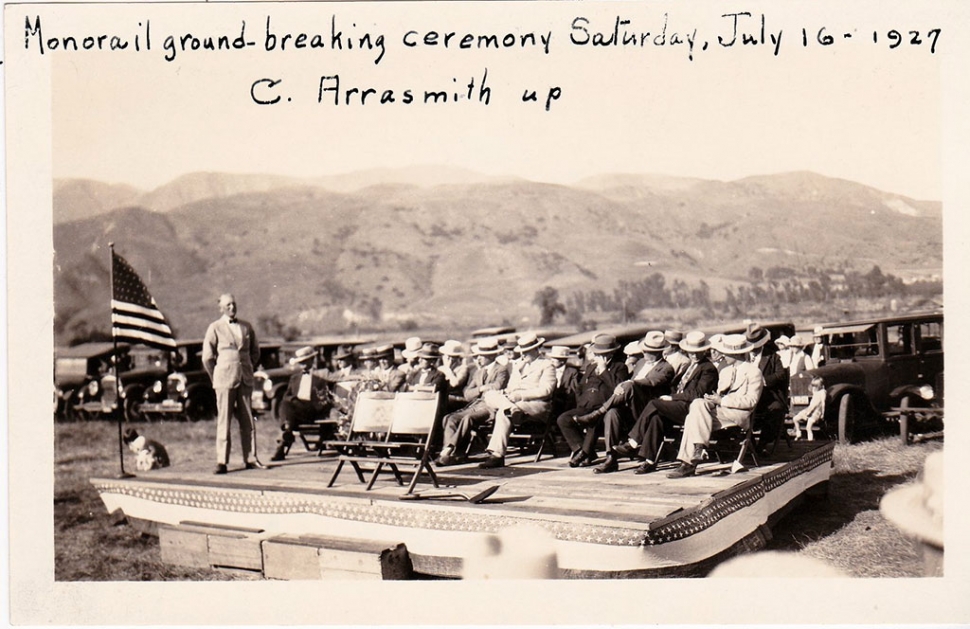|
History on Fillmore Conceptual Monorail
 Conceptual drawing of monorail. Photos courtesy Fillmore Historical Museum. By Anonymous — Wednesday, April 8th, 2020
 Billboard advertising the venture.  Groundbreaking ceremony for the Fillmore Mononrail which took place July 7th 1927. Pictured is Clarence Arrasmith, City Manager, standing. Seated L to R: Dock Wyatt (Santa Paula); Mayor W. H. Price; P. S. Coombs, VP Sespe Development Company; J. O. Groves, head engineer, Sespe Development Company; Joseph McNab, chairman of the ceremony; David J. Reese, Ed Goodenough; reporters. Courtesy Fillmore Historical Museum 1927 was the high point of the Roaring 20s. Lindbergh flew the Atlantic, Ford brought out its new Model A and Fillmore was going to get a Monorail – well maybe…… In May, 1927, Mr. P. S. Coombs came to town. He told city leaders he was formerly chief engineer for the city of Chicago and was now the vice-president of the Sespe Development Company, a Delaware corporation. The Sespe Development Company had determined that developing the Sespe Hot Springs area with a hotel and health spa would be a wonderful idea and to facilitate people’s travel to the hot springs, a monorail would be built. He even had a conceptual drawing of the monorail. The Chamber of Commerce agreed that this would be a wonderful idea. For many years local folks had enjoyed the hot springs and recently there had been people from Los Angeles traveling to the Sespe for “the cure.” Wasn’t there already the Hot Springs Hotel and a spa? This was a Fillmore joke, since the hotel was a shack without even an outhouse and the spa was some tarps hung on poles around one of the hot springs. Coombs was soon joined by Dr. Ernest Basher who said he represented a medical group from Los Angeles interested in developing the health spa, as well as Frank Buren, president of the Sespe Development Company and J. O. Groves, head engineer. A crew was brought in and a wagon road was blasted through to Grassy Flat where the main construction camp would be. While this was going on, W. E. Campbell, a well-known Fillmore real estate agent, was appointed to sell shares in the company to the public at $100 per share (about $1500 in today’s money). The conceptual drawing now adorned the Chamber of Commerce’s letterhead with the slogan “Home of the Monorail”. On July 16, 1927 a dedication ceremony was held chaired by John McNab. McNab was the founder of the Sespe Land and Water Company which had originally purchased the land Fillmore was on from the heirs of Thomas More. It was the Sespe Land and Water Company who had sold the land to the Southern Pacific for the depot, thus creating the town of Fillmore. P. S. Coombs gave a rousing speech about the plans for the monorail – why it might go as far as Bakersfield or even San Francisco. Those purchasing shares now would not regret it, think how much your shares in Ford would be if you had bought early! Eventually Mayor W. H. Price dug the first shovelful of dirt with a silver plated shovel and the project was officially started. Within a week, P. S. Coombs, Buren, Groves and Basher had all disappeared along with the silver plated shovel. In September, the Chamber of Commerce was reported as “wanting an inquiry as to what has become of the monorail project.” That was the last heard of the project. Fillmore had been suckered. When the old timers were asked bout the project didn’t seem to want to talk about it. If anyone finds some monorail stock certificates among their family papers, they have no value, but the Museum would love to have one for our collection. For more on Fillmore’s history, visit fillmorehistoricalmuseum.org. |
